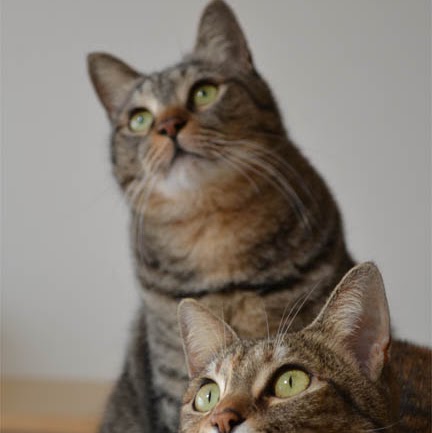Naomi D Yoshida
age ~66
from Los Altos, CA
Naomi Yoshida Phones & Addresses
- Los Altos, CA
- Sunnyvale, CA
Resumes

Naomi Yoshida
view sourceSkills:
Microsoft Office
Customer Service
Windows
Microsoft Word
Outlook
Microsoft Excel
Powerpoint
English
Research
Leadership
Sales
Public Speaking
Social Media
Strategic Planning
Customer Service
Windows
Microsoft Word
Outlook
Microsoft Excel
Powerpoint
English
Research
Leadership
Sales
Public Speaking
Social Media
Strategic Planning

Naomi Yoshida
view source
Naomi Yoshida
view source
Naomi Yoshida
view sourceLocation:
United States
Us Patents
-
Test Structure Design For Reliability Test
view source -
US Patent:7119571, Oct 10, 2006
-
Filed:Nov 24, 2004
-
Appl. No.:10/997267
-
Inventors:Naomi Yoshida - Sunnyvale CA, US
Toshiyuki Nagata - Los Gatos CA, US -
Assignee:Applied Materials, Inc. - Santa Clara CA
-
International Classification:G01R 31/26
-
US Classification:324765
-
Abstract:A flexible semiconductor test structure that may be incorporated into a semiconductor device is provided. The test structure may include a plurality of test pads designed to physically stress conductive lines to which they are attached during thermal cycling. By utilizing test pads with different dimensions (lengths and/or widths), the effects of thermal stress generated by a plurality of conductive lines having corresponding different dimensions may be simulated.
-
Test Structure Design For Reliability Test
view source -
US Patent:7365529, Apr 29, 2008
-
Filed:Aug 18, 2006
-
Appl. No.:11/465646
-
Inventors:Naomi Yoshida - Sunnyvale CA, US
Toshiyuki Nagata - Los Gatos CA, US -
Assignee:Applied Materials, Inc. - Santa Clara CA
-
International Classification:G01R 31/28
-
US Classification:3241581
-
Abstract:A flexible semiconductor test structure that may be incorporated into a semiconductor device is provided. The test structure may include a plurality of test pads designed to physically stress conductive lines to which they are attached during thermal cycling. By utilizing test pads with different dimensions (lengths and/or widths), the effects of thermal stress generated by a plurality of conductive lines having corresponding different dimensions may be simulated.
-
Amorphous Carbon Deposition Method For Improved Stack Defectivity
view source -
US Patent:8227352, Jul 24, 2012
-
Filed:Apr 25, 2011
-
Appl. No.:13/093679
-
Inventors:Hang Yu - Woodland CA, US
Deenesh Padhi - Sunnyvale CA, US
Man-Ping Cai - Saratoga CA, US
Naomi Yoshida - Sunnyvale CA, US
Li Yan Miao - San Francisco CA, US
Siu F. Cheng - Los Angeles CA, US
Shahid Shaikh - Santa Clara CA, US
Sohyun Park - Fremont CA, US
Heung Lak Park - Santa Clara CA, US
Bok Hoen Kim - San Jose CA, US -
Assignee:Applied Materials, Inc. - Santa Clara CA
-
International Classification:H01L 21/308
H01L 21/32 -
US Classification:438703, 438761, 257E21258, 257E21231
-
Abstract:Embodiments described herein relate to materials and processes for patterning and etching features in a semiconductor substrate. In one embodiment, a method of forming a composite amorphous carbon layer for improved stack defectivity on a substrate is provided. The method comprises positioning a substrate in a process chamber, introducing a hydrocarbon source gas into the process chamber, introducing a diluent source gas into the process chamber, introducing a plasma-initiating gas into the process chamber, generating a plasma in the process chamber, forming an amorphous carbon initiation layer on the substrate, wherein the hydrocarbon source gas has a volumetric flow rate to diluent source gas flow rate ratio of 1:12 or less; and forming a bulk amorphous carbon layer on the amorphous carbon initiation layer, wherein a hydrocarbon source gas used to form the bulk amorphous carbon layer has a volumetric flow rate to a diluent source gas flow rate of 1:6 or greater to form the composite amorphous carbon layer.
-
Amorphous Carbon Deposition Method For Improved Stack Defectivity
view source -
US Patent:8349741, Jan 8, 2013
-
Filed:Apr 25, 2012
-
Appl. No.:13/455916
-
Inventors:Hang Yu - Woodland CA, US
Deenesh Padhi - Sunnyvale CA, US
Man-Ping Cai - Saratoga CA, US
Naomi Yoshida - Sunnyvale CA, US
Li Yan Miao - San Francisco CA, US
Siu F. Cheng - Los Angeles CA, US
Shahid Shaikh - Santa Clara CA, US
Sohyun Park - Fremont CA, US
Heung Lak Park - Santa Clara CA, US
Bok Hoen Kim - San Jose CA, US -
Assignee:Applied Materials, Inc. - Santa Clara CA
-
International Classification:H01L 21/308
H01L 21/32 -
US Classification:438703, 438761, 257E21258, 257E21231
-
Abstract:Embodiments described herein relate to materials and processes for patterning and etching features in a semiconductor substrate. In one embodiment, a method of forming a composite amorphous carbon layer is provided. The method comprises positioning a substrate in a process chamber, introducing a hydrocarbon source gas into the process chamber, introducing a diluent source gas into the process chamber, introducing a plasma-initiating gas into the process chamber, generating a plasma in the process chamber, forming an amorphous carbon initiation layer on the substrate, wherein the hydrocarbon source gas has a volumetric flow rate to diluent source gas flow rate ratio of 1:12 or less, and forming a bulk amorphous carbon layer on the amorphous carbon initiation layer, wherein a hydrocarbon source gas used to form the bulk amorphous carbon layer has a volumetric flow rate to a diluent source gas flow rate of 1:6 or greater.
-
Oxygen Free Deposition Of Platinum Group Metal Films
view source -
US Patent:20230025937, Jan 26, 2023
-
Filed:Sep 29, 2022
-
Appl. No.:17/955996
-
Inventors:- Santa Clara CA, US
Wei V. Tang - Santa Clara CA, US
Seshadri Ganguli - Sunnyvale CA, US
Sang Ho Yu - Cupertino CA, US
Feng Q. Liu - San Jose CA, US
Jeffrey W. Anthis - San Jose CA, US
David Thompson - San Jose CA, US
Jacqueline S. Wrench - San Jose CA, US
Naomi Yoshida - Sunnyvale CA, US -
Assignee:Applied Materials, Inc. - Santa Clara CA
-
International Classification:H01L 21/285
C23C 16/455
C23C 16/18
H01L 23/532
C23C 16/04 -
Abstract:Methods of depositing platinum group metal films of high purity, low resistivity, and good conformality are described. A platinum group metal film is formed in the absence of an oxidant. The platinum group metal film is selectively deposited on a conductive substrate at a temperature less than 200 C. by using an organic platinum group metal precursor.
-
Fluorine-Free Tungsten Ald And Tungsten Selective Cvd For Dielectrics
view source -
US Patent:20210384035, Dec 9, 2021
-
Filed:Apr 8, 2021
-
Appl. No.:17/225667
-
Inventors:- Santa Clara CA, US
Shih Chung Chen - Cupertino CA, US
Kedi Wu - Fremont CA, US
Ashley Lin - New Taipei, TW
Chi-Chou Lin - San Jose CA, US
Yi Xu - San Jose CA, US
Yu Lei - Belmont CA, US
Mandyam Sriram - San Jose CA, US
Wen Ting Chen - San Jose CA, US
Srinivas Gandikota - Santa Clara CA, US
Chenfei Shen - San Jose CA, US
Naomi Yoshida - Sunnyvale CA, US
He Ren - San Jose CA, US -
Assignee:Applied Materials, Inc. - Santa Clara CA
-
International Classification:H01L 21/285
H01L 21/02
C23C 16/14
C23C 16/02 -
Abstract:Methods of forming metallic tungsten films selectively on a conductive surface relative to a dielectric surface are described. A substrate is exposed to a first process condition to deposit a fluorine-free metallic tungsten film. The fluorine-free metallic tungsten film is exposed to a second process condition to deposit a tungsten film on the fluorine-free metallic tungsten film.
-
Fluorine-Free Tungsten Ald For Dielectric Selectivity Improvement
view source -
US Patent:20210384036, Dec 9, 2021
-
Filed:Jun 4, 2021
-
Appl. No.:17/339454
-
Inventors:- Santa Clara CA, US
Chi-Chou Lin - San Jose CA, US
Kedi Wu - Fremont CA, US
Wen Ting Chen - San Jose CA, US
Shih Chung Chen - Cupertino CA, US
Srinivas Gandikota - Santa Clara CA, US
Mandyam Sriram - San Jose CA, US
Chenfei Shen - San Jose CA, US
Naomi Yoshida - Sunnyvale CA, US
He Ren - San Jose CA, US -
Assignee:Applied Materials, Inc. - Santa Clara CA
-
International Classification:H01L 21/285
C23C 16/455
C23C 16/14
C23C 16/04 -
Abstract:Methods of forming metallic tungsten films selectively on a conductive surface relative to a dielectric surface are described. A substrate is exposed to a first process condition to deposit a tungsten-containing film that is substrate free of tungsten metal. The tungsten-containing film is then converted to a metallic tungsten film by exposure to a second process condition.
-
Method Of Dielectric Material Fill And Treatment
view source -
US Patent:20210317580, Oct 14, 2021
-
Filed:Apr 14, 2020
-
Appl. No.:16/848784
-
Inventors:- Santa Clara CA, US
He REN - San Jose CA, US
Naomi YOSHIDA - Sunnyvale CA, US
Nikolaos BEKIARIS - Campbell CA, US
Mehul NAIK - San Jose CA, US
Martin Jay SEAMONS - San Jose CA, US
Jingmei LIANG - Santa Clara CA, US
Mei-Yee SHEK - Santa Clara CA, US -
International Classification:C23C 16/56
H01L 21/768 -
Abstract:Embodiments herein provide for oxygen based treatment of low-k dielectric layers deposited using a flowable chemical vapor deposition (FCVD) process. Oxygen based treatment of the FCVD deposited low-k dielectric layers desirably increases the Ebd to capacitance and reliability of the devices while removing voids. Embodiments include methods and apparatus for making a semiconductor device including: etching a metal layer disposed atop a substrate to form one or more metal lines having a top surface, a first side, and a second side; depositing a passivation layer atop the top surface, the first side, and the second side under conditions sufficient to reduce or eliminate oxygen contact with the one or more metal lines; depositing a flowable layer of low-k dielectric material atop the passivation layer in a thickness sufficient to cover the one or more metal lines; and contacting the flowable layer of low-k dielectric material with oxygen under conditions sufficient to anneal and increase a density of the low-k dielectric material
Googleplus

Naomi Yoshida

Naomi Yoshida

Naomi Yoshida

Naomi “まいろ” Yoshida

Naomi Yoshida
Tagline:
Naomi

Naomi Yoshida

Naomi Yoshida

Naomi Yoshida

Naomi Yoshida
view source
Naomi Yoshida
view source
Naomi Yoshida
view source
Naomi Yoshida
view source
Isabela Naomi Yoshida
view source
Naomi Yoshida
view source
Naomi Yoshida Amilhastre
view source
Naomi Yoshida
view sourceClassmates

Naomi Yoshida (Koga)
view sourceSchools:
Mid-Pacific Institute Honolulu HI 1946-1950
Community:
Tammi Ferguson, Thomas Senones
Youtube
Myspace
Flickr
Get Report for Naomi D Yoshida from Los Altos, CA, age ~66
















